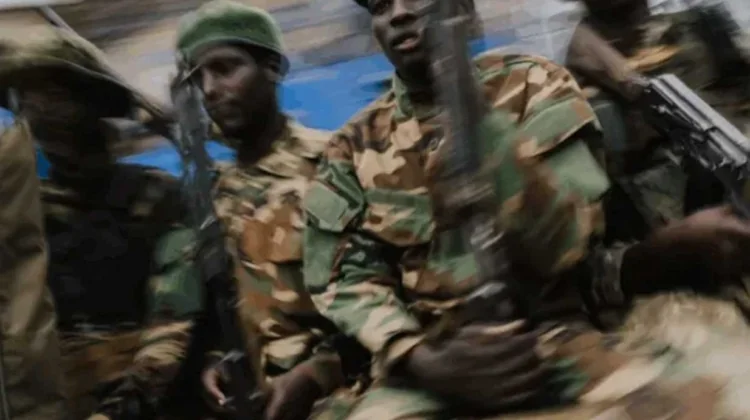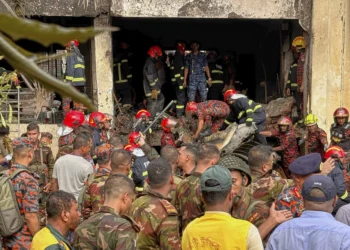
[Want even more content from FPM? Sign up for FPM+ to unlock exclusive series, virtual town-halls with our authors, and more—now for just $3.99/month. Click here to sign up.]
Foreign policy analysts everywhere were no doubt shocked recently when it was announced, seemingly out of nowhere, that President Trump had reached a peace agreement with the leaders of Rwanda and the Democratic Republic of Congo (DRC); two nations locked in over 30 years of rolling genocides and general conflict that has led to a mind-boggling death toll of around five million. The agreement is clearly serious with leaders from both countries making a push for President Trump to win the Nobel Peace Prize. Considering the scale of lives saved by such a deal (and that past winners include people like Al Gore and Barak Obama), Trump would absolutely deserve it.
Despite the astonishing amount of killing involved, legacy media covers the conflict only rarely, so it is important for FPM-readers to understand its background and grasp the sheer level of death, destruction and general savagery that Trump apparently is close to ending for good—Actual trigger warning: the following might be disturbingly graphic for some.
The downing of a Rwandan president’s plane in 1994 kicked off decades of fiery inter-ethnic tensions in the country leading to the infamous Rwandan genocide that same year—although tensions do go farther back; at least to 1959 with the overthrow and forced exile of an ethnic Tutsi monarchy by the Hutu majority. The perceived assassination of the Hutu leader triggered a 100-day massacre in which an astonishing 800,000 Tutsis (and moderate Hutus) were slaughtered—Many of us will remember the shocking pictures of machete-wielding gangs pursuing running victims in towns and villages. Women and children were raped en masse, thousands of others were taken as sex slaves, and hundreds of thousands of Rwanda’s 15 percent Tutsi-minority were forced to flee to neighboring Uganda.
The BBC encapsulated the ferocity of events in an anniversary piece from 2019 about the children of the mass rapes which took place. Reporters interviewed one woman, then in her early twenties, who had been hacked in the face with a machete (a common weapon held by most households in the region), then raped by up to a hundred different men all the while within sight of a pit of dead civilian bodies.
According to the piece, other groups “sexually assaulted her with small trees and sticks just hours later…. [i]t was only when another group attacked her, biting her all over her body, she decided she no longer wanted to live”—She did live and kept her now-adult son.
(Stop and compare this with what the left here in America consider signs of a ‘national crisis of racial hatred and systemic intolerance’: “micro-aggressions”, “cultural appropriation”, voter ID, education disparities, removing illegals, etc.)The month-long genocide ended with Tutsi exiles in nearby Uganda mounting (with Uganda’s help) a counter-action that pushed Rwandan Hutu soldiers and fearful Hutu civilians into neighboring DRC. Today, around 2 million Rwandan Hutus live in the DRC where the government is widely known to assist paramilitary incursions into Rwanda and vice versa, resulting in ongoing cycles of mass violence and broken stalemates.
While justice is rare, one Rwandan paramilitary leader, the cowboy-hat wearing Bosco “the Terminator” Ntaganda, was convicted in 2019 before the International Criminal Court on 18 counts of murder, rape, sexual slavery and using child soldiers. He was given 30 years, the longest sentence ever set down by the court.
More recently, Tutsi paramilitary groups took over the major city of Goma in the DRC. According to the UN, following the raid, over 100 female prisoners were raped and burned alive by incoming troops. Also there, 128 monkeypox-patients had to flee a medical facility when paramilitaries looted the place.
The UN has had rolling missions in the region for decades (currently, mostly Pakistani, Indian and Bangladeshi soldiers), but anti-UN protests erupted recently over anger that despite all this time “rebel activity has not ended and people in the region continue to live in a state of security.”
It is estimated that six million people in the DRC have been forced to flee their homes due to the continued conflict; a level of displacement comparable only to places we hear much more about in the legacy media e.g. Afghanistan, Syria and Ukraine. The populations of the war-refugee camps which have resulted can go up to 50,000, with water, food, sanitation and healthcare being scarce due to the camps’ sheer size and faraway locations from dangerous towns and cities. Silence among leftists in the US, as well as leaders in African-inundated Europe and Nobel Peace Prize-judges, would be not only hypocritical, but positively ghoulish. They must put their information war against President Trump aside, so they can help end a real one.















